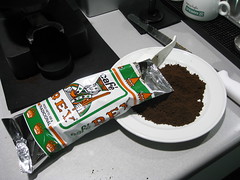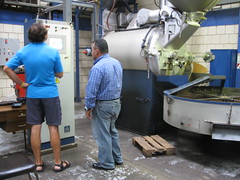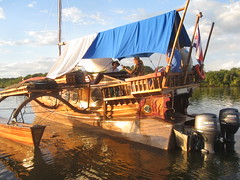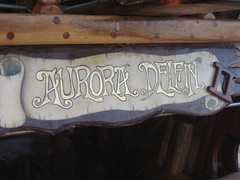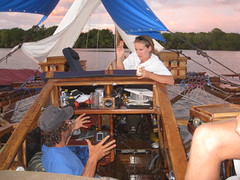After a late night yesterday (and a
wonderful party!), we hit the road early to visit the neighboring
province of Cartago.
Cartago is famous for its churches (some quite old), its alpine beauty (including volcanoes), and its hydroelectric plant. With Adri and Ruth's help and the guidance of Adri and Alex's trusty
hay-pay-essay, we'd set up a route that would take us through the region's highlights and have us back before traffic picked up.
We set out right after breakfast, hoping to catch a peak at the volcano before the fog moved in. Unfortunately, the unseasonably wet and blustery weather continued, and Irazu kept her secrets. We kept on driving.
Our first stop was the
eponymous capital of the region and the first capital of Costa Rica (until 1823). It is famed for the ruins of its church,
Parroquia de Santiago Apóstol, and the subsequently erected cathedral,
Basílica de Nuestra Señora de Los Ángeles. The ruins were amazing both for their (relative) antiquity as well as for their myth. According to local legend, the Blessed Virgin didn't like the location of the church. After the first time it was destoryed, catastrophes befell it each time repairs were undertaken. Only when the location of the more modern cathedral was chosen did she quiet down. The rain and wind were picking up, so we didn't linger in Cartago.
For lunch our guides recommended the little village of Orosí in the Paraíso Canton. Truth be told, we had a hard time finding a place! There is a little grass
jardín in the middle of town leading up to the famous church (which unfortunately was undergoing major restoration and therefore closed). Alongside there were a couple of over-priced restaurants, but nothing that really compelled us. We decided to take a little more time to look around town, and boy are we glad we did!
Set a bit back from the main road was a little building with a sign out front: "Soda Rancho San Ramon Cabecar". Even though there wasn't a soul in the place, there was something about it that we liked the looks of, and we decided to give it a go. We were met by a cute little girl of about nine or ten. She cheerfully brought us menus and did her best to seem professional while trying not to giggle at our attempts to ask about what juices they had. After a survey of the cooler facing us, she said that they had pineapple and papaya--those being the only fruits in the box on the bottom shelf. We asked for one of each to go with our usual
casados.
The little girl cheerfully collected our menus and the fruit and scampered off to the kitchen. Shortly thereafter, we heard the whirring of a blender. It's going to be a drag to go back to a culture of pre-made syrups and canned sodas. While we waited for our orders, we got to watch a Latin soap opera on the TV. Our waitress and her little brother sat at a nearby table engrossed. I must admit that our versions are tame in comparison.
A little while later our orders arrived. Whether from quality or hunger, they were some of the best we had ever tasted! Each
casado came with white rice, black beans, cooked vegetables, a prepared salad, and cabbage salad in addition to the requested meat. We'd also ordered a plate of fries. What a delicious mistake! It was almost more food that our stomachs could bear, but they were absolutely delectable.
While we were eating, the rest of the family made their way to the dining area to watch the TV. Three generations sat together munching on their own plate of fries. The little girl's mother, under the watchful eye of her
abuela, inquired how we liked the meal and if everything had been to our liking. It's hard to be effusive with our pidgin Spanish, but we did our best!
When we'd demolished everything, we asked for
la cuenta. The lady of the house insisted that we try her housemade dessert, a kind of pudding made from orange zest, juice, and gelatin--no sugar added! We tried to demure, but she wouldn't hear of it. Darned if it wasn't delicious too! It was all we could do to keep from licking the bowls in spite of our full bellies. Sated, we waddled to the car and headed towards the hydroelectric dam. The sky was starting to clear, and the countryside looked beautiful in the sparkling sunshine.
After following for some time along the shores of the Cachi Reservoir, swollen with the recent rains, we reached the
presa erected in the '70s. It was really a marvel!
The dam is one of Costa Rica's largest hydrelectric generating plants. The
lago takes up a large part of the Ujarras Valley and uses water from the Rio Macho and the Reventazon rivers. One of the spillways was open and the water rushing out was almost deafening. Looking back at the body of the dam, you could see aging catwalks in various states of decay. I can't imagine using one, but then again, I wouldn't be surprised if they did. On our way back to the Peugeot, we noticed a little path leading up the hill to our right, opposite the reservoir. We couldn't resist, so we put on our jackets and decided to check out the view.
The stairs were steep, scaling the hill directly. Along the route we saw legions of leaf-cutter ants, each colony with its own little boulevard. Given the altitude and the incline, we were happy to take a couple of breaks to watch them scurry on their way. At the top, we were rewarded with a commanding view of the valley. There was also a small cement post with some full beer bottles on it--some kind of altar maybe? We paused long enough to admire the view and snap a few photos before heading back down the hill to shelter.
It was starting to get late, so we took a brisk drive through the winding mountain roads, their sides lined with gates to the
fincas. Barbed wire fences were stretched between although occasionally, due to landslides, some of the fence posts merely hovered in the air above us. The hillsides were dotted with cattle and covered with coffee alternately. It's hard to imagine a more tranquil scene.
About halfway back to the metropolis, the sun came out again and we were treated to an amazing quadruple rainbow. It stayed with us all the way home.
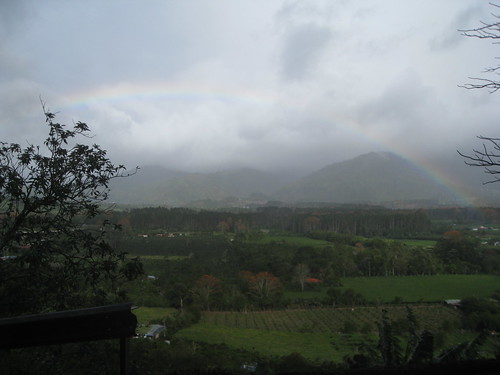
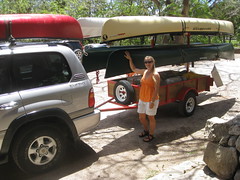
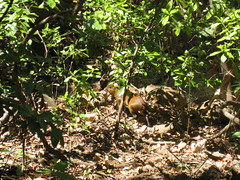
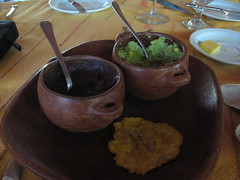

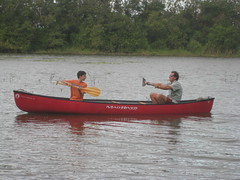
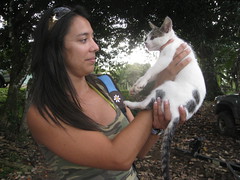
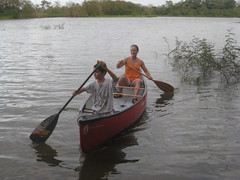
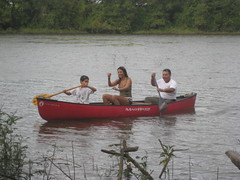
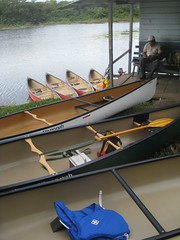
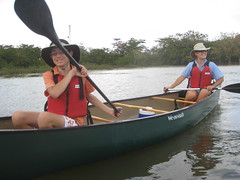



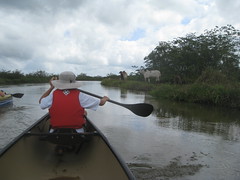
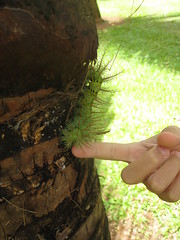
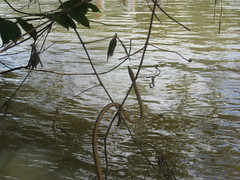
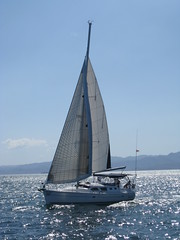
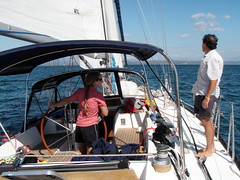
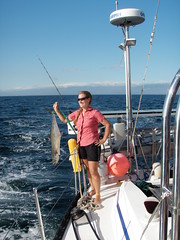
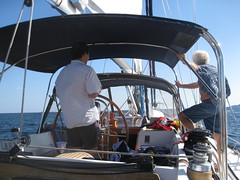

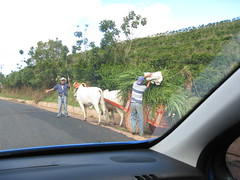
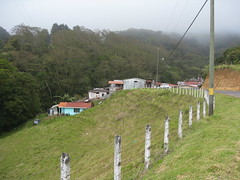
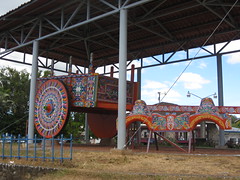

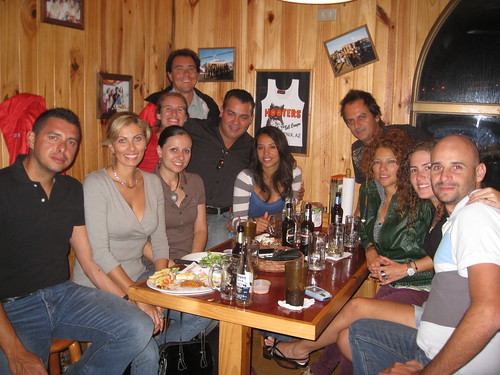
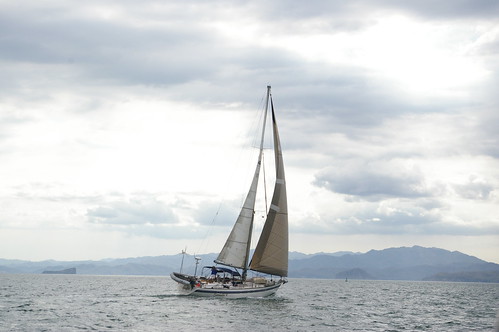

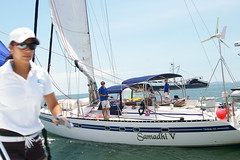

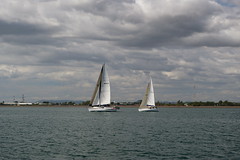
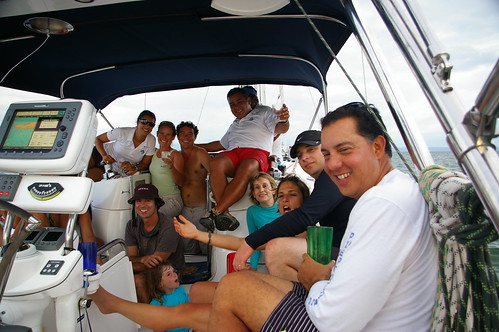
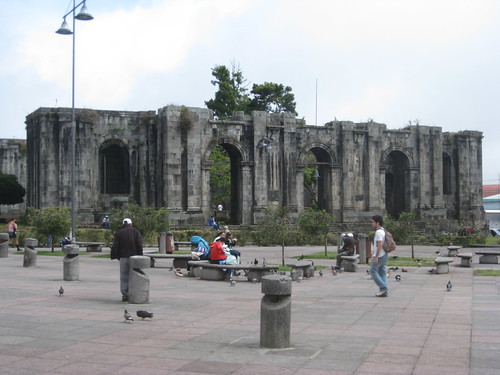
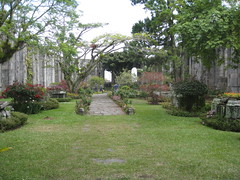

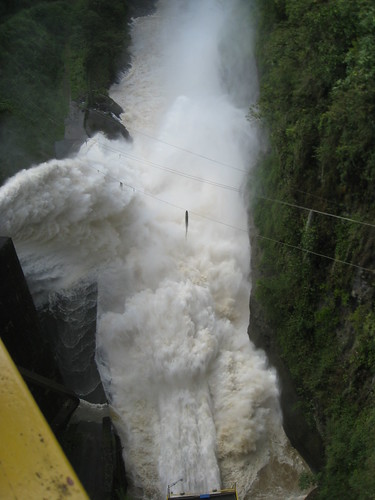


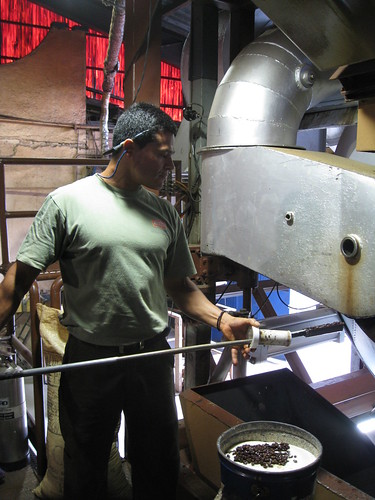
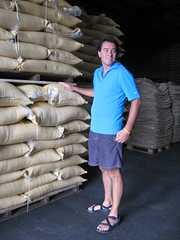 Our friends Alex & Adri invited us to visit them in San Jose and join them for a surprise birthday party (with karaoke!) at their home. This was an invitation we wouldn't pass up!
Our friends Alex & Adri invited us to visit them in San Jose and join them for a surprise birthday party (with karaoke!) at their home. This was an invitation we wouldn't pass up!
